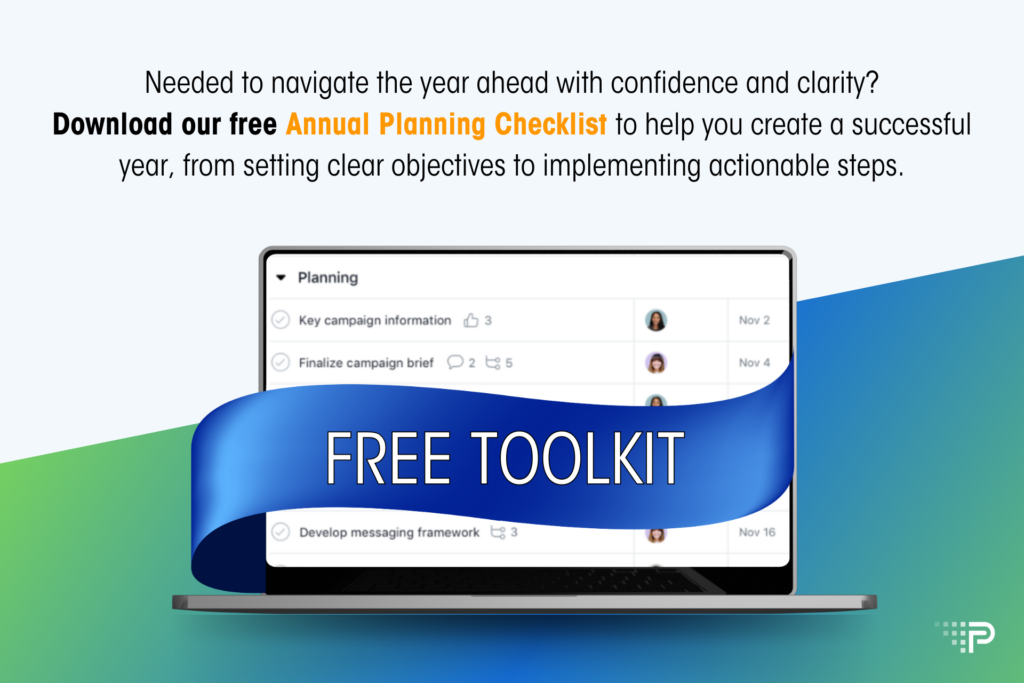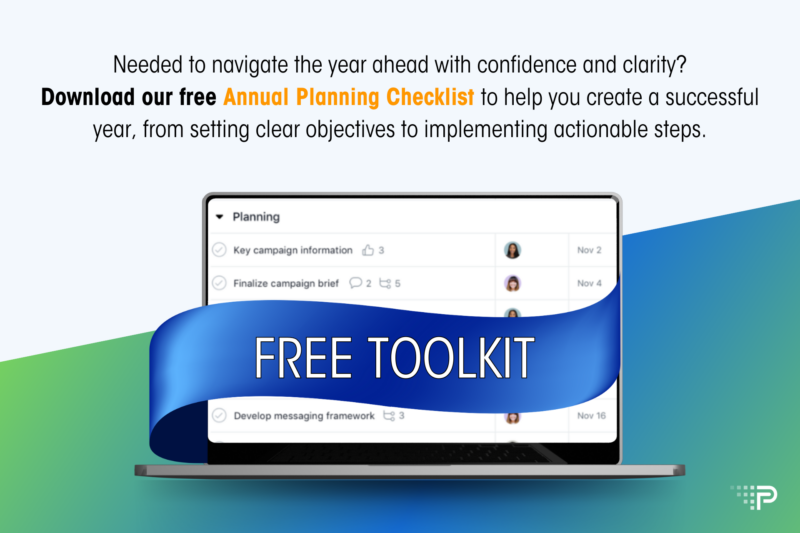Annual Planning Guide: Strategies for a Successful Year Ahead

As an entrepreneur or small business owner, establishing a clear and actionable annual planning guide at the start of each year is crucial for long-term success. A well-thought-out plan helps you assess what worked, identify growth areas, and create a roadmap for the year ahead. Without it, you risk reacting to immediate challenges rather than proactively building toward your long-term vision.
In this comprehensive annual planning guide, we’ll cover proven strategies and frameworks to help you create a successful year, from setting clear objectives to implementing actionable steps. Whether you’re focused on boosting revenue, expanding your customer base, or optimizing operations, this guide will provide the tools you need to plan effectively.
- Understanding the Importance of an Annual Planning Guide
- Reflecting on the Previous Year: What Worked and What Didn’t
- Setting Clear, SMART Goals with an Annual Planning Guide
- Breaking Down Goals Into Quarterly and Monthly Milestone
- Planning for Flexibility: Expecting the Unexpected
- Building a Strong Financial Plan Using Your Annual Planning Guide
- Assessing Resources: Team, Tools, and Time
- Developing a Marketing and Sales Strategy for the Year
- Continuous Learning and Growth as a Business Owner
- Reviewing and Adjusting Your Annual Planning Guide Throughout the Year

1. Understanding the Importance of an Annual Planning Guide
An annual planning guide isn’t just a to-do list for the next 12 months—it’s a comprehensive roadmap that aligns your long-term vision with actionable short-term steps. It allows you to:
- Prioritize your resources effectively
- Focus on key growth areas while mitigating risks
- Avoid distractions by sticking to your primary objectives
- Measure success with clear benchmarks and key performance indicators (KPIs)
Without an organized plan, you risk falling into a reactive mode, where you’re constantly responding to immediate problems instead of driving your business forward. A well-structured annual planning guide will help you build a successful, intentional, and focused year.
2. Reflecting on the Previous Year: What Worked and What Didn’t
Before moving forward, it’s essential to evaluate the past year as part of your annual planning guide. Taking stock of your wins, losses, and lessons will provide the insights needed to improve and refine your approach for the coming year.
Conduct a Year-End Review:
- Revenue and Profit: Did you hit or exceed your profit targets? Were certain revenue streams more successful than others?
- Clients and Customers: Analyze your client base. Who were your most valuable clients, and were there any challenging customers that impacted your business negatively?
- Marketing Performance: Which marketing channels were the most effective? Evaluate the performance of email marketing, social media, and paid ads.
- Operational Efficiency: Were there inefficiencies in your processes? Did your team and tools perform as expected?
- Personal and Professional Development: How much time did you invest in personal growth, and what new skills did you acquire?
Key Takeaways:
- What were your biggest wins and why?
- What challenges did you face, and how could they have been handled differently?
- What do you wish you had focused on more?
3. Setting Clear, SMART Goals with an Annual Planning Guide
After reflecting on the past year, it’s time to use your annual planning guide to define your goals for the upcoming year. Applying the SMART framework is one of the most effective ways to set clear, actionable goals:
- Specific: Define your goals with clarity.
- Measurable: Ensure your goals are trackable.
- Achievable: Set realistic targets that align with your resources.
- Relevant: Make sure your goals align with your overall business objectives.
- Time-Bound: Assign deadlines to hold yourself accountable.
Examples of SMART Goals in an Annual Planning Guide:
- Increase revenue by 25% through the expansion of product offerings and the entry into a new market by Q3.
- Reduce customer churn by 10% by enhancing onboarding and implementing a customer loyalty program within six months.
- Hire two full-time employees for sales and marketing by the end of Q2 to support growth efforts.
By following these principles in your annual planning guide, you’ll ensure that your goals are clear, actionable, and attainable.
Ready to set your own SMART goals? Check out the DigitalProjectsPlans.ai smart goal generator to help you create clear, measurable goals that keep you on track for success.
4. Breaking Down Goals Into Quarterly and Monthly Milestones
Big annual goals can often feel overwhelming. That’s why it’s critical to break them down into manageable quarterly and monthly milestones. In your annual planning guide, focus on:
Creating Milestones:
- Quarter 1: Research new market opportunities and begin pilot projects.
- Quarter 2: Launch full-scale offerings in the new market and ramp up marketing efforts.
- Quarter 3: Assess results and refine your approach based on feedback.
- Quarter 4: Optimize the product and operations to close out the year successfully.
Regular check-ins each month will help you stay on track and provide the flexibility to adjust as needed. This process ensures you can make steady progress toward your overall objectives throughout the year.
5. Planning for Flexibility: Expecting the Unexpected
As part of your annual planning guide, it’s important to build flexibility into your plan. While setting goals and milestones is crucial, life is unpredictable, and your business will need to adapt to changes.
Key Considerations for Flexibility in Your Annual Planning Guide:
- Build in Buffer Time: Schedule additional time for unexpected delays or new opportunities.
- Create Contingency Plans: Identify potential risks and prepare backup strategies.
- Embrace Agility: Stay open to pivoting when necessary, without losing sight of your core objectives.
Including flexibility in your annual planning guide ensures that even if circumstances change, your business can continue moving forward.
6. Building a Strong Financial Plan Using Your Annual Planning Guide
A solid financial plan forms the backbone of your annual planning guide. Without proper financial management, your business will struggle to achieve its goals, no matter how well-planned they are.
Steps for a Strong Financial Plan in Your Annual Planning Guide:
- Project Revenue and Expenses: Start with a realistic revenue estimate and list out all your fixed and variable expenses.
- Identify Growth Investments: Decide where to allocate resources for growth, such as marketing, hiring, or new tools.
- Monitor Cash Flow: Maintain a consistent cash flow strategy to avoid liquidity issues.
- Set Financial Milestones: Break down your financial goals into quarterly or monthly targets for better tracking.
A comprehensive financial plan helps ensure that your business stays on solid footing as you pursue your goals throughout the year.
7. Assessing Resources: Team, Tools, and Time
When using your annual planning guide, it’s important to assess whether you have the necessary resources to execute your strategy effectively. Evaluate your:
- Team: Do you need to hire new employees or outsource tasks to streamline operations?
- Tools and Technology: Are you using the best tools to optimize efficiency and manage your business effectively?
- Time: Prioritize your time and delegate lower-priority tasks to ensure that you focus on high-impact activities.
Investing in the right resources will greatly enhance your ability to achieve your goals as laid out in your annual planning guide.
8. Developing a Marketing and Sales Strategy for the Year
A robust marketing and sales strategy is essential to the success of any annual planning guide. Your strategy should focus on reaching your ideal customers, delivering value, and converting leads into loyal clients.
Elements to Include in Your Annual Planning Guide:
- Target Audience: Reassess your ideal customer profile and adjust your marketing strategy accordingly.
- Marketing Channels: Focus on the channels that delivered the best results last year, while experimenting with new ones.
- Content Strategy: Develop a content calendar to keep your audience engaged throughout the year.
- Sales Funnel: Ensure your sales process aligns with your marketing strategy to nurture leads and convert them into paying clients.
9. Continuous Learning and Growth as a Business Owner
Your annual planning guide should include a commitment to your personal and professional development. Continuous learning is key to staying competitive and growing as a leader.
- Industry Research: Stay up-to-date on industry trends and best practices.
- Skill Development: Identify skills you want to improve—whether it’s leadership, financial management, or marketing.
- Networking: Surround yourself with other entrepreneurs and business leaders for support and inspiration.
The more you invest in yourself, the better equipped you’ll be to steer your business toward success.
10. Reviewing and Adjusting Your Annual Planning Guide Throughout the Year
Your annual planning guide should not be a static document—it’s a living, breathing roadmap. Regular reviews will ensure that you stay on track and adapt as necessary.
Review Your Annual Planning Guide:
- Quarterly Reviews: Assess progress and make adjustments as needed.
- Monthly Check-Ins: Measure performance against KPIs and milestones.
- End-of-Year Review: Reflect on your accomplishments and prepare for the next year.
Consistent reviews and adjustments will ensure your annual planning guide remains relevant and effective throughout the year.
Conclusion: Making the Most of Your Year Ahead
In conclusion, this Annual Planning Guide provides you with the strategic framework needed to navigate the year ahead with confidence and clarity. From setting SMART goals and breaking them down into achievable milestones, to building a solid financial plan and creating an effective marketing strategy, every step ensures that your business is positioned for success.
The key to a great year isn’t just about having a plan; it’s about having the right tools and mindset to adapt and grow. With regular reviews and adjustments, your plan will evolve with your business, allowing you to stay focused on your long-term vision.
If you’re ready to start creating your SMART goals, leverage DigitalProjectPlans.ai to automatically map out your SMART goals and project strategies at the click of a button. Let us handle the heavy lifting, so you can focus on what truly matters—growing your business and making the most of the year ahead!

Need help achieving time sensitive goals and getting better productivity out of your business? We can help! https://digitalprojectplans.ai/